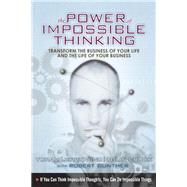
What is included with this book?
Yoram (Jerry) Wind is The Lauder Professor, Professor of Marketing, Founding Editor of Wharton School Publishing, and Academic Director of The Wharton Fellows Network at the University of Pennsylvania. He is also the Founder and Director of the SEI Center for Advanced Studies in Management, The Wharton School's think tank. Wind led the development of a number of key Wharton programs including the reinvention of the Wharton MBA curriculum and the creation of the Wharton Executive MBA Program. Among his many affiliations is former chancellor, the International Academy of Management (IAM). One of the world's most cited marketing authors, his books include Driving Change: How the Best Companies Are Preparing for the 21st Century, and The Power of Impossible Thinking. Dr. Wind has served as an advisor to many Fortune 500 firms and non-U.S. multinationals throughout the financial services, pharmaceuticals, information, and consumer packaged goods industries, and as advisor and board member for a wide range of entrepreneurial ventures. His consulting focuses on global corporate and business strategy, corporate transformation, marketing strategy, and especially new business development. He is the recipient of all the major marketing awards. Wind received a Ph.D. from Stanford University.
Colin Crook is senior fellow of The Wharton School of the Universityof Pennsylvania, Advisory Board, member of Rein Capital, editorialboard member of the journal Emergence, and has served on numerousNational Academy committees and advisory groups. He has providedadvice to governments and businesses around the world, and is aFellow of the Royal Academy of Engineering (UK). He was formerlyChief Technology Officer for Citicorp.
| (An Aside) Is This Any Way to Start a Book? | p. xxiii |
| Preface | p. xlvii |
| Introduction to the Paperback Edition | p. lix |
| Recognize the Power and Limits of Mental Models | p. 1 |
| Our Models Define Our World | p. 3 |
| Running the Miracle Mile | p. 21 |
| Keeping Your Models Relevant | p. 37 |
| Should You Change Horses? | p. 39 |
| Paradigm Shifts Are a Two-Way Street | p. 57 |
| Seeing a New Way of Seeing | p. 77 |
| Sift for Sense from Streams of Complexity | p. 93 |
| Engage in R&D of the Mind | p. 121 |
| Transform Your World | p. 139 |
| Dismantle the Old Order | p. 141 |
| Find Common Ground to Bridge Adaptive Disconnects | p. 157 |
| Act Quickly and Effectively | p. 171 |
| Develop the Intuition to Act Quickly | p. 173 |
| The Power to Do the Impossible | p. 189 |
| Challenging Your Own Thinking: Personal, Business, and Society | p. 209 |
| Conclusion: What You Think Is What You Do | p. 235 |
| The Neuroscience Behind Mental Models | p. 239 |
| Selected Bibliography | p. 257 |
| Acknowledgments | p. 261 |
| Index 263 | |
| Table of Contents provided by Publisher. All Rights Reserved. |
The New copy of this book will include any supplemental materials advertised. Please check the title of the book to determine if it should include any access cards, study guides, lab manuals, CDs, etc.
The Used, Rental and eBook copies of this book are not guaranteed to include any supplemental materials. Typically, only the book itself is included. This is true even if the title states it includes any access cards, study guides, lab manuals, CDs, etc.